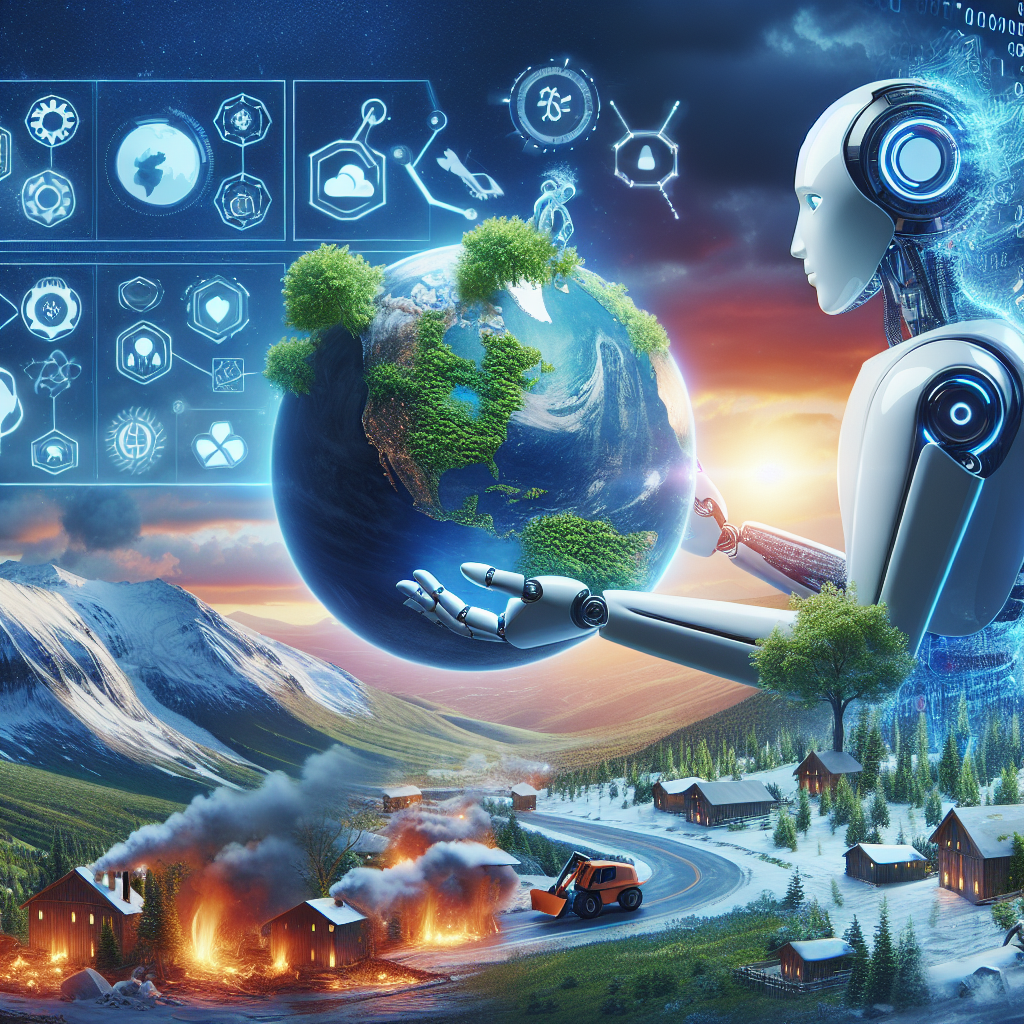Artificial General Intelligence (AGI) is a rapidly advancing field that holds promise for solving some of the world’s most pressing challenges, including climate change. As global temperatures continue to rise and extreme weather events become more frequent, there is an urgent need for innovative solutions to combat the effects of climate change. AGI has the potential to revolutionize how we address environmental issues, from predicting and mitigating the impacts of climate change to optimizing resource management and reducing carbon emissions. In this article, we will explore the ways in which AGI can help combat climate change and create a more sustainable future for our planet.
The Role of AGI in Combating Climate Change
AGI has the ability to process vast amounts of data and make complex decisions in real-time, which makes it a powerful tool for addressing climate change. By analyzing data from satellites, sensors, and other sources, AGI can provide insights into how the environment is changing and help predict future trends. For example, AGI can be used to model the effects of different climate scenarios and develop strategies for reducing greenhouse gas emissions.
AGI can also optimize resource management by identifying opportunities to increase efficiency and reduce waste. For example, AGI can help optimize energy consumption in buildings, improve water management systems, and enhance agricultural practices to reduce the environmental impact of food production. By identifying patterns and trends in data, AGI can help businesses and governments make more informed decisions that benefit both the environment and the economy.
Another key role of AGI in combating climate change is in developing new technologies and solutions. AGI can accelerate the process of innovation by simulating different scenarios and testing potential solutions in virtual environments. This can help researchers and engineers identify promising technologies more quickly and bring them to market faster. AGI can also be used to optimize the design of renewable energy systems, improve the efficiency of electric vehicles, and develop new materials that are more sustainable and environmentally friendly.
AGI can also play a crucial role in disaster response and recovery efforts. By analyzing real-time data from sensors and satellites, AGI can help predict and respond to natural disasters such as hurricanes, wildfires, and floods. AGI can also be used to coordinate emergency response efforts, assess damage, and prioritize resources to help communities recover more quickly.
Overall, AGI has the potential to revolutionize how we address climate change by providing powerful tools for analyzing data, optimizing resource management, developing new technologies, and responding to environmental challenges. By harnessing the power of AGI, we can create a more sustainable future for our planet and mitigate the impacts of climate change.
FAQs
Q: How can AGI help predict and mitigate the impacts of climate change?
A: AGI can analyze vast amounts of data from satellites, sensors, and other sources to provide insights into how the environment is changing and predict future trends. By modeling different climate scenarios and developing strategies for reducing greenhouse gas emissions, AGI can help policymakers and businesses make more informed decisions to mitigate the impacts of climate change.
Q: How can AGI optimize resource management to reduce waste and improve efficiency?
A: AGI can identify opportunities to increase efficiency and reduce waste in various sectors, such as energy, water, and agriculture. By analyzing data and identifying patterns and trends, AGI can help optimize resource management systems to reduce the environmental impact of activities such as energy consumption, water usage, and food production.
Q: How can AGI accelerate the development of new technologies and solutions for combating climate change?
A: AGI can simulate different scenarios and test potential solutions in virtual environments to accelerate the process of innovation. By identifying promising technologies more quickly and bringing them to market faster, AGI can help researchers and engineers develop new technologies that are more sustainable and environmentally friendly.
Q: How can AGI help in disaster response and recovery efforts?
A: AGI can analyze real-time data from sensors and satellites to predict and respond to natural disasters such as hurricanes, wildfires, and floods. By coordinating emergency response efforts, assessing damage, and prioritizing resources, AGI can help communities recover more quickly from disasters and reduce the impacts of climate change.
In conclusion, AGI has the potential to revolutionize how we address climate change by providing powerful tools for analyzing data, optimizing resource management, developing new technologies, and responding to environmental challenges. By harnessing the power of AGI, we can create a more sustainable future for our planet and mitigate the impacts of climate change.

